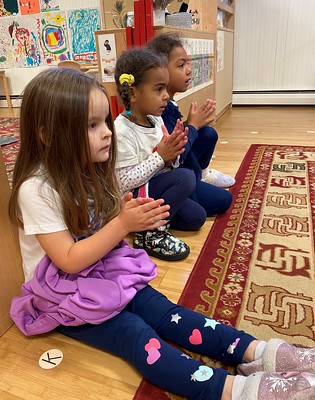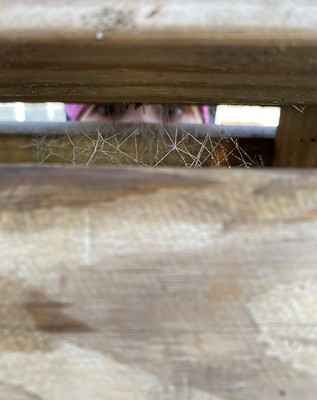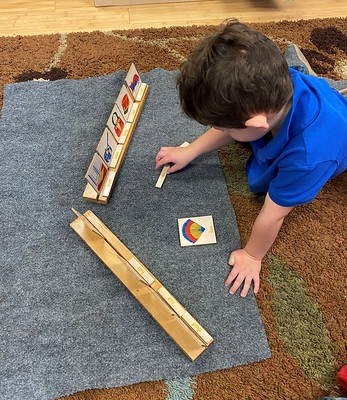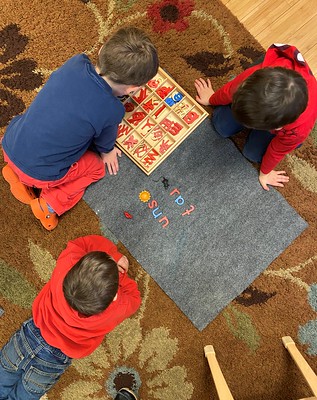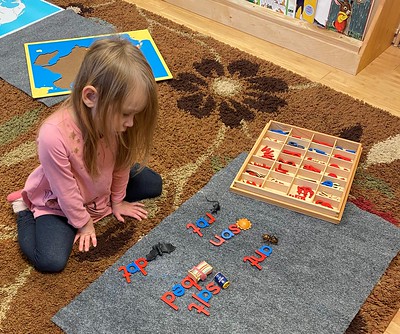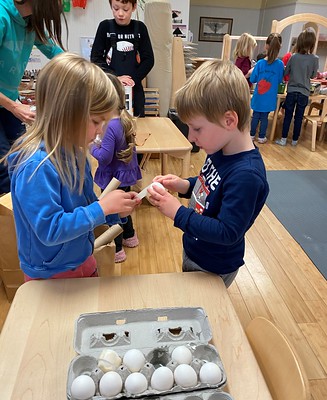Artists created sunset water color pictures. They first drew the foreground using black pastels, trees and mountains and houses, then used watercolor paints to add shades of the sunset.
We reviewed bird signs, the alphabet, and numbers during sign language then were introduced to some feeling/emotion signs with a duck and goose story. Rose taught us how to sign and sing BINGO, which we all attempted to keep up with, but signing all those letters so quickly was tricky work for our fingers! It got easier the more claps we added and fewer letters we had to remember.
The story of Stone Soup was introduced, which is an annual Sunnybrook Montessori tradition during the month of November. We read the version by Marcia Brown from 1947 which, although not the original published tale from 1720, is likely the oldest in children’s picture book format. We used the flannel board to help us tell the story, taking turns adding ingredients to the big black pot. Throughout the month we will read several versions of Stone Soup and do some Stone Soup activities, culminating in a whole class stone soup celebration during the week of Thanksgiving, when all the children bring and prepare ingredients, then sit together to enjoy it on the Wednesday before Thanksgiving.
We talked about the change in seasons and the arrival of winter weather. We were so excited for the surprise first snow Tuesday afternoon!
Kindergarten students chose their own work, focusing primarily on reading and writing work. Many students created letter sound books. They chose a drawer of tiny objects all beginning with the same letter sound. They chose 6-7 objects to draw and label. Some children did sight word searches, story writing, or matching words to pictures.
Friday students explored eggs. We read An Egg is Quiet then cracked open and observed an egg – noticing the yellow yolk and clear albumen. The children then tried to break open their eggs by squeezing them as hard as they could!! Several succeeded despite the shape of the egg’s shell (I think I purchased rather weak eggs with cracks in them). They then attempted to break eggs by walking on them. A few of the eggs cracked under the pressure, but most held on for the final experiment – dropping them without breaking! To do this experiment the children used a variety of materials to protect their eggs from the impact of the drop, working with a partner/team, then took turns dropping them to see which broke and which were sufficiently padded to withstand the impact.






